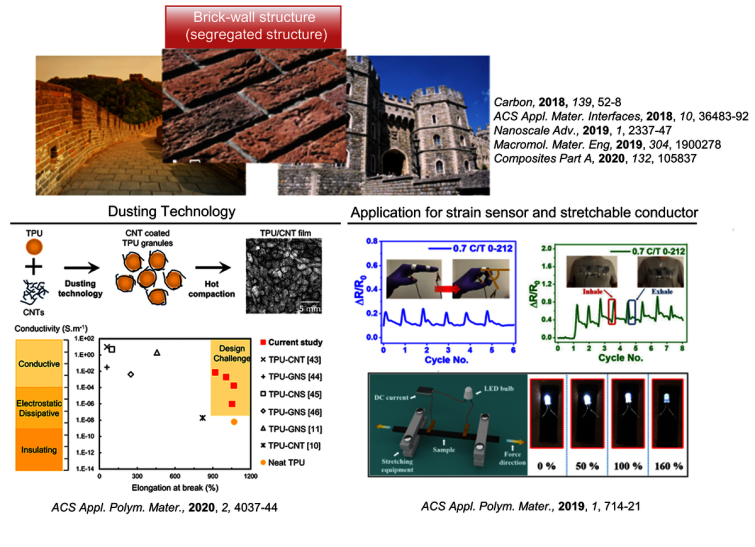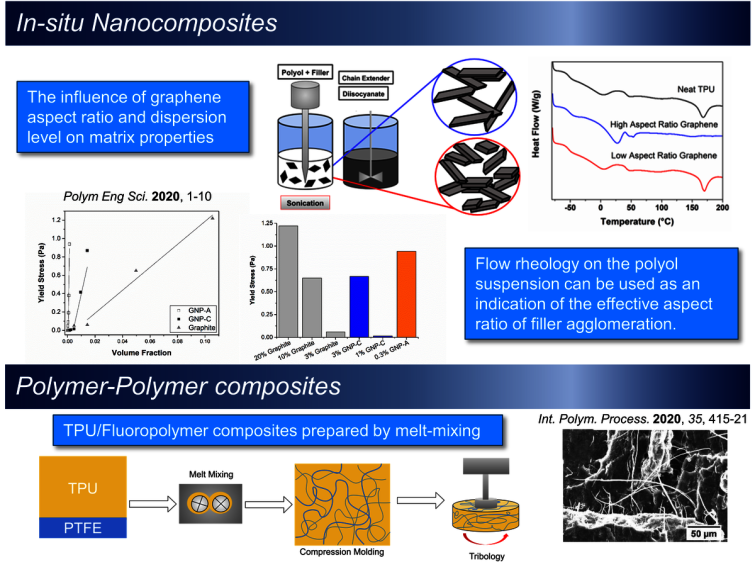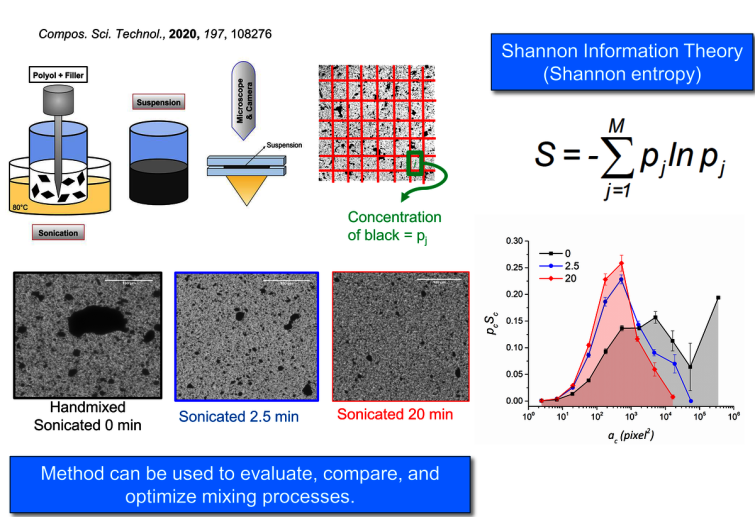Vitrimerization (converting the permanent cross-linked thermosets into vitrimer polymers)
We have developed a new approach for reprocessing existing thermoset waste using the concept of associative dynamic bonding, vitrimers. The methodology is based on appropriate catalysts introduced into polymer networks via ball milling and triggering reversible exchange reactions among crosslinks. The permanently crosslinked thermoset network can be converted into a vitrimer-type dynamic network via a simple, one-step method without depolymerization. Once the cross-linked network is vitrimerized into a dynamic network, it becomes recyclable and reprocessable for multiple cycles without adding more catalyst. We have also applied the concept of associative dynamic bonding to improve the thermal stability and chemical resistance of the recycled thermoplastics. Moreover, by integrating nanofillers in the vitrimerization process we were able to convert waste thermoset into high value-added nanocomposites.
Interface design strategy for the fabrication of highly stretchable strain sensors
Electrically conductive elastomer composites (CECs) have great potential in wearable and stretchable electronic applications. However, it is often challenging to trade off electrical conductivity and mechanical flexibility in melt-processed CECs for wearable electronic applications. We have developed CECs with high electrical conductivity and mechanical elasticity by controlling the segregated networks of carbon nanofillers formed at the elastomer interface. To this end, we introduce a facile and scalable strategy, i.e., dusting technology, to fabricate highly stretchable conductive elastomer composites (CECs) at extremely low filler content (0.1 wt.%).
High-Performance TPU Systems
The easy processibility and good elastomeric properties of TPU make it a superb material choice for the matrix phase of composites. Desirable properties like electrical conductivity, thermal conductivity, reduced or increased coefficient of friction can be added by mixing in the TPU matrix various fillers, such as carbon nanotubes (CNTs), graphene, clay, or blending the TPU with other polymers. TPU composite materials are often prepared by in situ polymerization, melt blending, reactive and unreactive extrusion, and solvent blending. We explore the processing-property relationships that determine performance, using fundamental relationships to understand filler-matrix interactions and their influence on the desired properties.
Quantifying Dispersion Level
Carbon fillers including, CNTs, graphene, and carbon black, can significantly enhance material properties, including outstanding thermal and electrical conductivity, mechanical reinforcement, and abrasion resistance. As a result, they are the filler of choice for advanced polymer composites and gels in a wide variety of applications. However, due to strong interparticle interactions, the individual fillers tend to form micrometer-size bundles which entangle and condense into larger agglomerates resulting in inferior properties when compared to the individual filler. Difficulties in achieving and quantitatively evaluating uniform dispersion and distribution of particles have resulted in sub-par material properties as compared with what could theoretically be achieved for well-dispersed systems, as well as a lack of quality control measures to systematically optimize mixing procedures. We have developed a method of analyzing optical microscope images of suspensions that results in an objective measure of particle dispersion and distribution. The method could be expanded for a variety of particle systems and images.
Poly(High Internal Phase Emulsions)
The physical packing limit of monosized spheres is about 0.74 for a face-centered cubic crystalline structure and 0.64 for random close packing. Liquid-liquid emulsions can surpass these loading limits since the liquid droplets can be deformed into polyhedrons, which pack more efficiently than spheres. Thus, the volume fraction of the dispersed phase in an emulsion can reach even more than 95%. The resulting dispersion is known as a high internal phase emulsion (HIPE), characterized by a very thin film of continuous phase separating neighboring liquid droplets.
By polymerizing the continuous phase of the HIPE and then extracting the dispersed phase, open-porous foams known as poly(HIPE) can be produced. Such foams have a complex morphology consisting of cavities (voids) originally occupied by the emulsion droplets and interconnecting holes between neighboring voids (windows). This technique for producing low density porous materials is known as emulsion templating and can be applied to a variety of chemistries to create many useful structures for applications in the medical field, separations, heavy metal capture, and consumer products.





